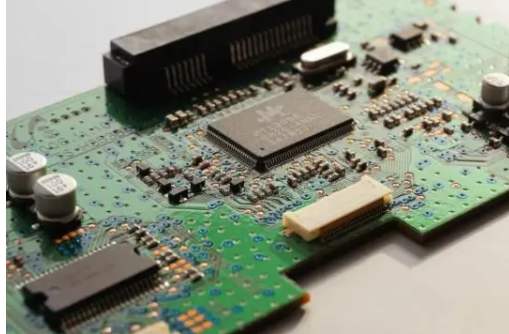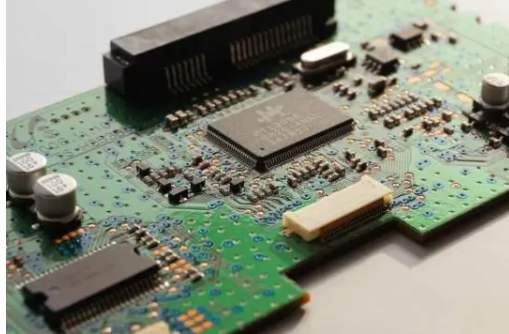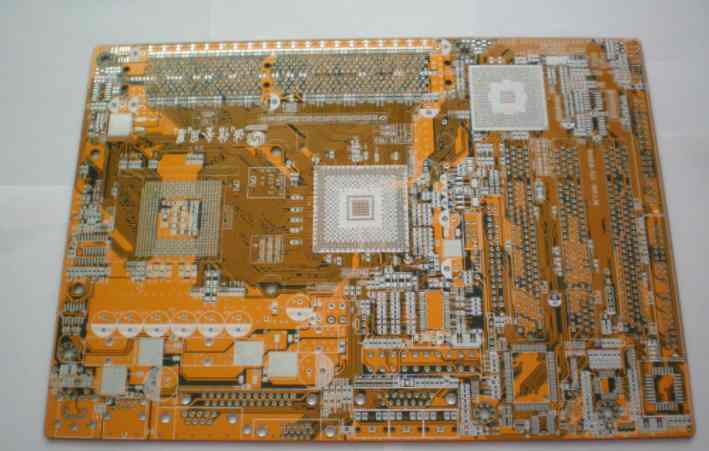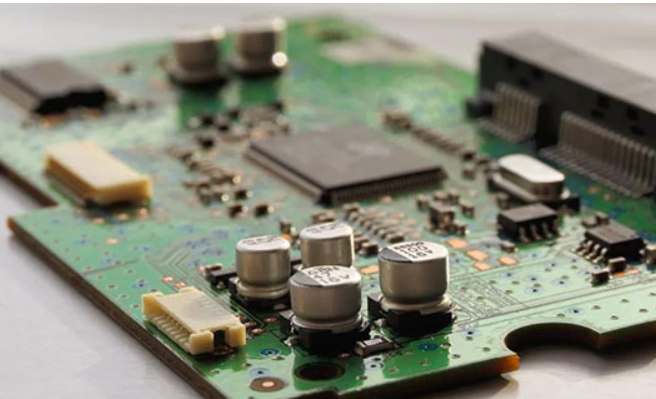
The physical design of the PCB board is the final step in any switching power supply design. If the design method is not proper, PCB may radiate excessive electromagnetic interference, resulting in unstable power supply.
The following is an analysis of matters needing attention in each step of PCB design:
1. Create component parameters from schematic diagram to PCB design process -> Input schematic netsheet -> Design parameter setting -> Manual layout -> Manual wiring -> Verify the design -> Audit -> CAM output.
2. The spacing between adjacent conductors in the parameter setting must meet the electrical safety requirements, and the spacing should be as wide as possible to facilitate operation and production. The minimum spacing should at least fit the voltage. When the wiring density is low, the spacing of signal lines can be appropriately increased. The signal line with high and low level difference should be as short as possible, and the spacing should be increased. The general wiring spacing is set to 8mil. The distance between the inner hole edge of the pad and the edge of the printed board should be greater than 1mm to avoid pad defects in the process of processing. When the wiring connected to the pad is fine, the connection between the pad and the wiring should be designed in the shape of a drop. The advantage of this is that the pad is not easy to peel off, but the wiring and pad are not easy to disconnect.
Practice has proved that even if the circuit schematic design is correct and the printing design is not correct, the reliability of electronic equipment will be adversely affected. For example, if two thin parallel lines of a printed board are close together, there will be a delay in the signal waveform and reflected noise at the end of the transmission line; Interference caused by improper consideration of power supply and ground wire will degrade product performance. Therefore, the correct method should be adopted in the design of printed circuit board. Each switching power supply has four current circuits:
(1) AC circuit of power switch
(2) Output rectified AC circuit
(3) Input signal source current ring
(4) The output load current loop and the input loop charge the input capacitor through the DC current, and the filter capacitor mainly plays the role of broadband energy storage; Similarly, the output filter capacitor is used to store the high-frequency energy of the output rectifier, eliminating the DC energy of the output load circuit. Therefore, the terminals of the input and output filter capacitors are very important. The input and output current circuits can only be connected to the power supply from the terminals of the filter capacitor; If the connection between the input/output circuit and the power switch/rectifier circuit cannot be connected directly to the capacitor's terminals, AC energy will radiate into the environment through the input or output filter capacitor. Both the AC circuit of the power switch and the AC circuit of the rectifier contain high amplitude ladder current. The harmonic component of these currents is very high, and the frequency is much higher than the fundamental frequency of the switch. The peak amplitude can be up to 5 times the continuous input/output DC current amplitude. The conversion time is usually about 50ns. These two circuits are the most prone to electromagnetic interference, so these AC circuits must be laid before the other printed lines in the wiring power supply. The three main components of each circuit, the filter capacitor, the power switch or rectifier, and the inductor or transformer, should be placed next to each other. Reposition components so that the current path between them is as short as possible. The best way to establish a switching power supply layout is similar to its electrical design.
The best design process is as follows:
- Place transformer
- Design the power supply switching current circuit
- Output rectifier Design current circuit
- Control circuit Connects to the AC power circuit
- Design input current source circuit and input filter
Design the output load circuit and output filter. According to the functional unit of the circuit, the layout of each component of the circuit should follow the following principles:
(1) First, consider the PCB size. When PCB size is too large, printed line length, impedance increases, anti-noise ability decreases, cost increases; If it is too small, the heat dissipation is poor, and the adjacent lines are prone to interference. The best shape for a board is a rectangle with a 3:2 or 4:3 aspect ratio. Components located on the edge of the board are generally not less than 2mm away from the edge of the board.
(2) When placing the equipment, it is necessary to consider the welding in the future, not too intensive
(3) Centered on the core components of each functional circuit, and arranged around it. The components shall be arranged evenly, orderly and compact on the PCB, and the leads and connections between the components shall be reduced and shortened as far as possible. The decoupling capacitor is as close to the VCC of the component as possible
(4) For the circuit with high frequency operation, the distribution parameters between components should be considered. For general circuits, the components should be arranged in parallel as far as possible. This is not only beautiful, but also easy to assemble and weld, and easy to mass produce.
(5) Arrange the position of each functional circuit unit according to the circuit flow direction, so that the layout is convenient for the signal flow direction, and try to keep the signal direction consistent.
(6) The first principle of layout is to ensure the distribution rate of wiring. When moving components, pay attention to the connection of the fly wire, and put together the components that have a connection relationship.
(7) Reduce the area of the loop as much as possible to suppress the radiation interference of the switching power supply

Four, wiring switch power supply contains high frequency signal. Any printed line on the PCB can act as an antenna. The length and width of the printed line affect its impedance and inductance, and thus its frequency response. Even printed wires passing through the DC signal can couple to RF signals from adjacent printed wires, causing circuit problems (or even re-radiating interference signals). Therefore, all printed wires through AC current should be designed to be as short and wide as possible, which means that all components connected to the printed wires and other power lines must be placed close together. The length of the printed line is proportional to its inductance and impedance, while the width is inversely proportional to its inductance and impedance. The length reflects the wavelength of the printed line response. The longer the length, the lower the frequency at which the printed wire can send and receive electromagnetic waves, and the more radio-frequency energy it can radiate. According to the current of the printed circuit board, try to rent the width of the power cord, in order to reduce the circuit resistance. At the same time, the direction of the power cord and ground wire is consistent with the direction of the current, which helps to enhance the anti-noise ability. Grounding is the bottom branch of the four current circuits of the switching power supply, which plays an important role as the common reference point of the circuit and is an important method to control interference. Therefore, the placement of ground wires should be carefully considered in the layout. Mixed ground cables may cause unstable power supply.
Ground wire design should pay attention to the following points:
1. Select the correct single point grounding. In general, the common end of the filter capacitor should be the only connection point for other ground points to be coupled with the high current alternating ground. The ground point of the circuit of the same level should be as close as possible, and the power filter capacitor of the circuit should also be connected to the ground point of the same level. The main consideration is that the current ground returned by each part of the circuit is variable, and the impedance of the actual line flowing through will lead to the change of the ground potential of each part of the circuit and introduce interference. In this switching power supply, the inductance effect between wiring and components is small, while the circulation formed by the grounding circuit has a greater impact on interference, so a point grounding is adopted, that is, the power switching current circuit (ground wire of several components in the ground circuit is connected to the ground pin, and the ground wire of several components in the current circuit of the output rectifier is also connected to the ground pin of the corresponding filter capacitor. Make the power supply work more stable and not easy to self-excitation, if you can not do a single point, in the public ground wire connected to two diodes or a small resistance, can be connected to a more concentrated copper foil.
2. Make the ground cable thicker. If the ground wire is very thin, the ground potential will change with the change of the current, resulting in the timing signal level of the electronic device is unstable, and the anti-noise performance becomes worse. Therefore, make sure that each high-current ground terminal uses the shortest and widest printed wire possible, and widen the width of the power supply and ground wire as much as possible. The ground wire should be wider than the power cord. Their relations are: ground > Power cord > Signal cable. If possible, the ground cable should be wider than 3mm. A large area covering each layer can also be used as the ground cable. The unused part of the printed board is connected to the earth as a ground wire. The following principles must also be followed when wiring globally
(1) Wiring direction: from the welding surface, the arrangement direction of components should be consistent with the schematic diagram as far as possible, and the wiring direction should be consistent with the wiring direction of the circuit diagram. Because it is usually necessary to test various parameters of the welding surface in the production process, it is convenient for inspection, debugging and maintenance in the production (note: on the premise of meeting the requirements of circuit performance, overall installation and panel) layout.
(2) When designing the wiring diagram, the wiring should turn as little as possible, the width of the printed arc line should not change abruptly, the line Angle should be more than 90 degrees, and the line should be as simple and clear as possible.
(3) No cross circuit is allowed in the printed circuit. Lines that may cross can be resolved by "drilling" or "winding". That is, have a lead "drill" through a gap at the foot of other resistors, capacitors, and triodes, or "wind" through one end of a lead that might cross. In a special case, how do you make a circuit very complicated? To simplify the design, jumpers are also allowed to solve cross-circuit problems. Because of the single panel, in-line elements are at the top and surface mount elements are at the bottom, so in-line elements can overlap with surface mount elements in the layout, but overlap of pads should be avoided.
3. The input and output ground of the switching power supply are low-voltage DC-DC. In order to feed the output voltage back to the primary of the transformer, the circuits on both sides should have a common reference ground. Therefore, after laying copper ground wires on both sides, they should be connected together to form a public ground wire
Five, after checking the wiring design, we should carefully check whether the wiring design conforms to the rules formulated by the designer, and confirm whether the rules formulated meet the requirements of the printed board production process. Generally, it is necessary to check whether the distance between wire, wire and component pad, wire and through hole, component pad and through hole, through hole and through hole is reasonable and meets the production requirements. Is the width of the power cord and ground wire appropriate? Is there a place in the PCB where the ground wire can be widened? Note: Some errors can be ignored. For example, the Outline section of some connectors is placed outside the board frame and errors occur when checking spacing; In addition, copper should be re-coated each time wiring and holes are modified.
6. Check according to the PCB checklist. The checklist includes design rules, layer definition, wire width, spacing, pad and hole Settings. It pays attention to the rationality of device layout, wiring and routing of power and ground networks, shield high-speed clock networks, and placement and connection of coupling capacitors.
7. Precautions for designing and exporting photo files:
a. The output layer includes the wiring layer (bottom layer), the screen printing layer (top layer and bottom layer), the welding resistance layer (bottom welding resistance), the drilling layer (bottom layer), and the NC drilling file
The bay.
b. When setting the number of layers of the screen printing layer, do not select Part Type. Select the Outline, Text, and Linec of the top layer (bottom layer) and the screen printing layer. When setting the layer of the screen printing layer, do not select Part Type, but select the outline, text and line of the top (bottom) layer and the screen printing layer. d. Use the default Settings of the Power PCB Baord and do not change anything when generating the drill file.







